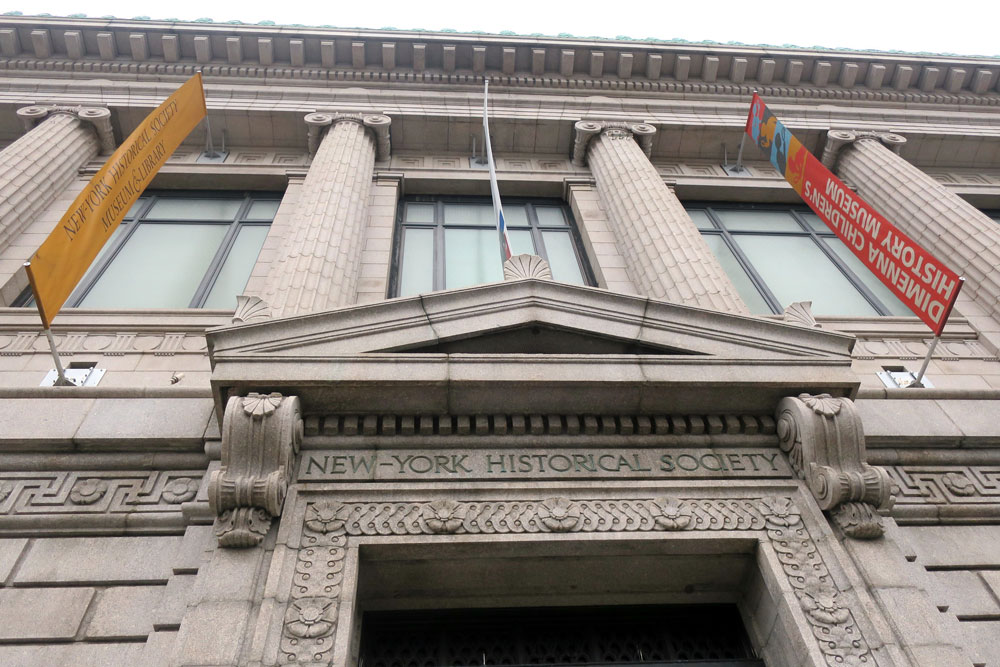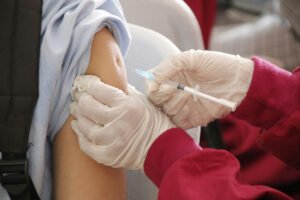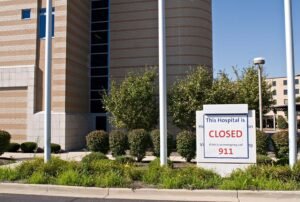
August 14, 2020; New York Times
When times are hard, we turn to the things that offer us comfort: foods, surroundings, and, quite often, stories. Telling stories of how people weather these days of fear, emotional stress, economic insecurity, loved ones’ deaths, and unknown futures may serve to bring some light and some peace. In opening “Hope Wanted: New York City Under Quarantine,” the New-York Historical Society hopes to connect the people of the city to one another and reflect on the overwhelming events of the last few months.
The outdoor exhibit in the museum’s courtyard showcases 14 oral histories (accessible via cellphone) and more than 50 photographs (printed on weatherproof panels) of New Yorkers from across all five boroughs and all walks of life. The stories and photos are the work of writer Kevin Powell and photographer Kay Hickman, who, in early April spent two days traveling the city interviewing and photographing Powell’s friends and others who were suggested as good subjects for this project.
The two described those two days as surreal. “In a lot of ways, I needed to do this so I didn’t lose my mind,” Powell reflected by phone from his home in Fort Greene, Brooklyn. “I felt very powerless, very helpless. I was having a lot of severe nightmares just because of everything that was happening. It was a lot of emotional turmoil. I knew people who were sick. I lost a family member. I can’t just sit here and not help in some way to tell the story of what’s happening.”
What Powell describes comes through in the voices and photos of the exhibit, including the various paths the subjects took to deal with the pandemic’s onset and subsequent racial reckoning. Take Dr. Mark Naison, a 74-year old Fordham University professor who said the virus robbed him of the two things he loved: personal contact with his students and playing tennis. But when his students began participating in the Black Lives Matter protests, some began collecting oral histories of people in the Bronx. Naison began raising funds to pay them to do this work.
“By the end of the semester, I felt this surge of energy and creativity coming from the students,” Naison says. “They’ve been so inspired by the resilience and courage of the people they interviewed.” (So has the professor, it seems.)
Sign up for our free newsletters
Subscribe to NPQ's newsletters to have our top stories delivered directly to your inbox.
By signing up, you agree to our privacy policy and terms of use, and to receive messages from NPQ and our partners.
In many ways, “Hope Wanted” resembles the StoryCorps initiative begun in 2003 by National Public Radio (NPR). At that time, a booth was set up in Grand Central Station with a stated mission to preserve and share humanity’s stories in order to build connections between people and create a more just and compassionate world. Since then, more than half a million people have recorded their stories, many of which have been aired on NPR. Again, the focus is on collecting, sharing, and preserving people’s stories and offering a sense of both history and comfort from that process.
Like StoryCorps, the New-York Historical Society views “Hope Wanted” as a growing exhibit. They have positioned an open-air story booth at the center of the exhibit and are inviting visitors to call in their own lockdown experiences. Some of these may join the institution’s collection.
“There’s something very personal and even intimate about getting those first-person stories that you can’t necessarily replicate through objects and ephemera,” says Margaret K. Hofer, vice president and director of the museum division of New-York Historical Society, who is overseeing the collection. “The objects tend to be symbolic stand-ins for experience, while the oral histories are quite immediate.”
Powell himself gravitates to the story of Tanya Fields, known as “Mama Tanya.” She contracted COVID-19 in March, along with five of her six children, and survived. The organization she founded, the Black Feminist Project, has grown during the pandemic, and its urban farm, Black Joy Farm, gives away hundreds of pounds of food every week via their Corona-Relief Food Box.
It’s no wonder Powell finds her story and others to be a source of healing and hope. Just like that warm bowl of homemade soup, or that blanket you wrap up in when you need to feel better, or the cool hand of someone special on your forehead, in hard times, we all need hope. Thank goodness for stories.—Carole Levine











